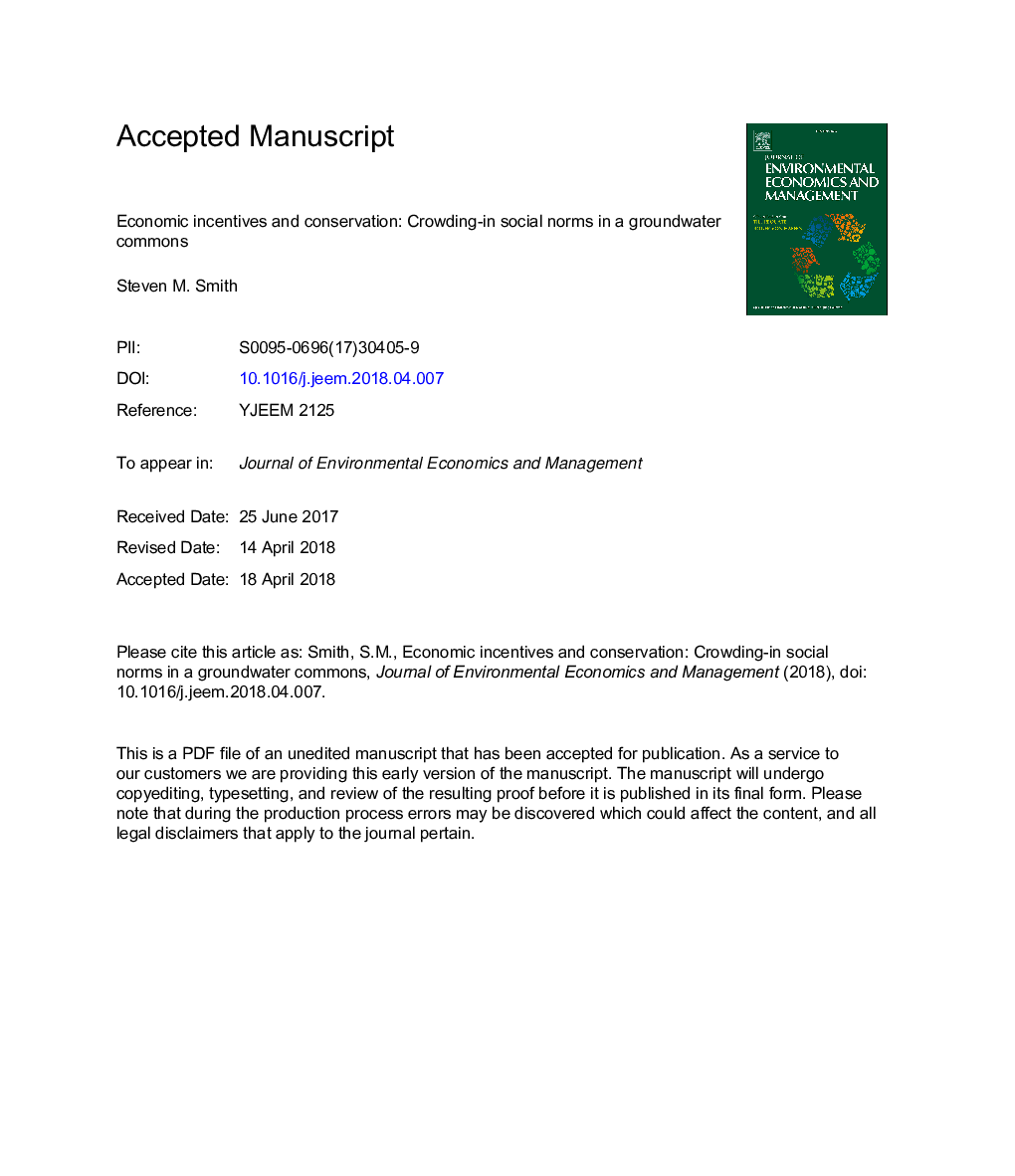| Article ID | Journal | Published Year | Pages | File Type |
|---|---|---|---|---|
| 7361245 | Journal of Environmental Economics and Management | 2018 | 77 Pages |
Abstract
Price-based interventions can be corrective where users extract from a common resource, but may also impact existing social norms, often crowding them out. In contrast, I find a pumping fee implemented by a group of irrigators in Southern Colorado effectively crowds-in pro-conservation norms, enhancing the financial incentive's impact. Using a unique, spatially oriented panel-data set of groundwater wells, I separate the direct role of increased pumping costs from the indirect effect transmitted through altered conservation norms. To quantify conservation behavior, I estimate how pumping at one well responds to pumping at nearby wells - using instrumental variables to address simultaneity bias - and interact that behavior with a difference-in-difference framework to assess the influence of the intervention. In the preferred specification, the fee directly accounts for approximately 74% of the reduced pumping and the remaining 26% comes from crowding-in conservation norms.
Related Topics
Social Sciences and Humanities
Economics, Econometrics and Finance
Economics and Econometrics
Authors
Steven M. Smith,
